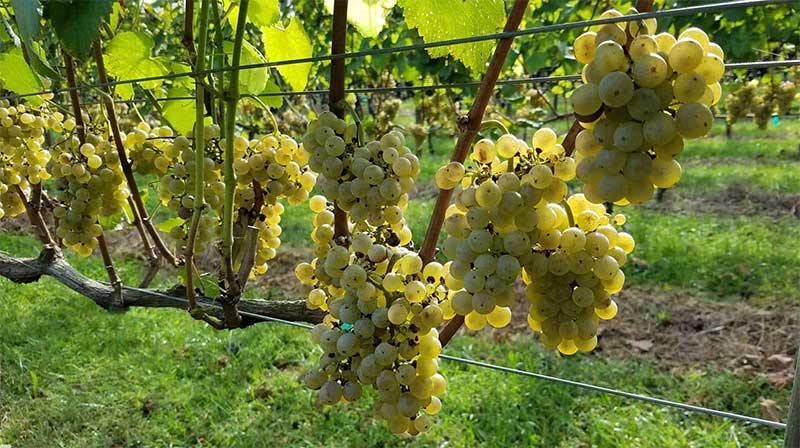

Nestled in the lush, green hills of Galicia in northwestern Spain, Albarino wine stands as a testament to the region’s rich winemaking tradition and its unique terroir. Known for its crisp acidity, vibrant aromatics, and the signature peach and citrus flavours, Albarino has captured the hearts of wine enthusiasts worldwide. In this article, we will delve into the world of Albarino wine, exploring its history, characteristics, and the enchanting landscapes that contribute to its distinctive taste.
Albarino, named after the Albarino grape variety, has been cultivated in the Rías Baixas region of Galicia for centuries. The precise origins of the grape are a subject of debate, with some claiming it originated in Portugal and others asserting that it has deep Spanish roots. Regardless of its origins, Albarino has firmly established itself as the flagship grape of Rías Baixas and a symbol of Galician viticulture.

The unique maritime climate, characterized by mild temperatures and high humidity, influences the character of Albarino grapes. The region’s proximity to the Atlantic Ocean means that the vines benefit from cool breezes and ample rainfall. The result is grapes with a refreshing acidity and excellent ripening conditions.
Albarino wines are known for their distinct profile. Upon pouring, one immediately notices their pale, straw-yellow hue, reminiscent of the region’s sun-drenched vineyards. The aroma is an inviting bouquet of white flowers, ripe peaches, apricots, and zesty citrus notes. These scents transport the drinker to the lush Galician countryside, evoking images of sunlit vineyards and salt-kissed ocean air.
The palate is where Albarino truly shines. It offers a crisp, refreshing acidity that dances on the taste buds. It is an ideal companion for seafood dishes, especially Galicia’s famous pulpo a la gallega (octopus with paprika). The flavours of green apple, pear, and tropical fruit are underscored by a subtle minerality, which adds depth and complexity to the wine. Albarino’s signature finish is long and mouthwatering, leaving a vibrant, citrusy note that lingers delightfully.
The Rías Baixas region’s terroir plays a pivotal role in shaping the character of Albarino wine. The vineyards are often planted on granite-based soils, which contribute to the wine’s minerality. The proximity to the Atlantic Ocean also influences the grapes’ ripening process, ensuring that they maintain their acidity and freshness.
Winemakers in Rías Baixas use a combination of modern and traditional techniques to craft Albarino wines. Stainless steel fermentation tanks are commonly employed to preserve the grape’s vibrant fruit flavours. Some producers experiment with oak aging to add complexity and depth to their offerings. However, the traditional style, fermented in temperature-controlled stainless steel tanks and bottled young, is the most prevalent.
One of the pleasures of Albarino wine is its versatility at the table. Its crisp acidity and fruity character make it an excellent companion for a wide range of dishes. Seafood, including grilled fish, shellfish, and sushi, harmonize wonderfully with the wine’s zesty acidity. Its refreshing nature also makes it a delightful aperitif. Especially on warm summer days when a glass of Albarino can transport you straight to the Galician coast.
Albarino wine, born from the enchanting landscapes of Galicia’s Rías Baixas region, is a true treasure of Spanish winemaking. Its captivating flavours and aromas, coupled with its ability to complement a variety of dishes, have earned it a special place in the hearts of wine enthusiasts. Whether you’re sipping it by the sea in Galicia or in the comfort of your own home, Albarino offers a taste of this unique Spanish terroir that is sure to leave a lasting impression. So, the next time you’re seeking a refreshing and elegant wine, consider reaching for a bottle of Albarino. Let it transport you to the sun-soaked hills of Galicia with each sip.